Blog
3 Percent of the Population Suffers from Hyperhidrosis
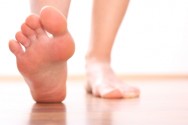 While sweating is a natural condition, nearly three percent of the population suffers from excessive sweating or hyperhidrosis. This condition occurs when the glands produce more sweat than is necessary to keep the body cool. While a doctor should be seen to assess the severity and treatment of the condition, there are antiperspirants that can be used to calm the disease. Many also seek Botox treatment to block the chemicals that cause the glands to release excessive sweat.
While sweating is a natural condition, nearly three percent of the population suffers from excessive sweating or hyperhidrosis. This condition occurs when the glands produce more sweat than is necessary to keep the body cool. While a doctor should be seen to assess the severity and treatment of the condition, there are antiperspirants that can be used to calm the disease. Many also seek Botox treatment to block the chemicals that cause the glands to release excessive sweat.
If you have any concerns, consult with one of our podiatrists of New York Foot and Ankle. Our doctors will assist you with all of your foot and ankle needs.
Hyperhidrosis of the Feet
Hyperhidrosis is a rare disorder that can cause people to have excessive sweating of their feet. This can usually occur all on its own without rigorous activity involved. People who suffer from hyperhidrosis may also experience sweaty palms.
Although it is said that sweating is a healthy process meant to cool down the body temperature and to maintain a proper internal temperature, hyperhidrosis may prove to be a huge hindrance on a person’s everyday life.
Plantar hyperhidrosis is considered to be the main form of hyperhidrosis. Secondary hyperhidrosis can refer to sweating that occurs in areas other than the feet or hands and armpits. Often this may be a sign of it being related to another medical condition such as menopause, hyperthyroidism and even Parkinson’s disease.
In order to alleviate this condition, it is important to see your doctor so that they may prescribe the necessary medications so that you can begin to live a normal life again. If this is left untreated, it is said that it will persist throughout an individual’s life.
A last resort approach would be surgery, but it is best to speak with your doctor to find out what may be the best treatment for you.
If you have any questions please feel free to contact our offices located in Bethpage and Franklin Square, NY. We offer the newest diagnostic tools and technology to treat your foot and ankle needs.
Kaley Cuoco Takes Care of Her Feet
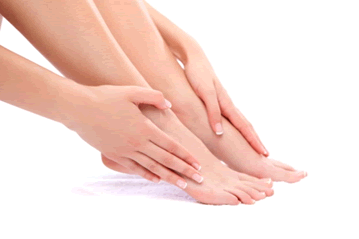 Kaley Cuoco of the Big Bang Theory has been seen on numerous red carpets, quickly changing from high heels to comfortable sneakers. At the People's Choice Awards and SAG awards, Cuoco was not shy about taking care of her feet with a change to stylish Dior sneakers. Make sure to give your feet a rest from wearing high heels as they put uneven pressure on your feet and back. High heels can be damaging to your feet if worn for long periods.
Kaley Cuoco of the Big Bang Theory has been seen on numerous red carpets, quickly changing from high heels to comfortable sneakers. At the People's Choice Awards and SAG awards, Cuoco was not shy about taking care of her feet with a change to stylish Dior sneakers. Make sure to give your feet a rest from wearing high heels as they put uneven pressure on your feet and back. High heels can be damaging to your feet if worn for long periods.
Every day foot care is very important, especially for those that are lacking the proper foot care resources. For more information about everyday foot care, consult with one of our podiatrists of New York Foot and Ankle. Our doctors will assist you with all of your foot and ankle needs.
Every Day Foot Care
Often, people take care of their bodies, face and hair more so than they do for their feet. But the feet are a very important aspect of our bodies, and one that we should pay more attention to. After all, without our feet, we would not be able to perform most daily tasks. It is best to check your feet regularly to make sure there are no new bruises or cuts that you may not have noticed before, for example.
For dry feet, moisturizer can easily be a remedy and can be applied as often as necessary to the affected areas. Wearing shoes that fit well can also help you maintain good foot health, as well as making it easier to walk and do daily activities without the stress or pain of ill-fitting shoes, high heels, or even flip flops.
Also, wearing clean socks with closed shoes is important to ensure that sweat and bacteria do not accumulate within the shoe. Clean socks help to prevent athlete’s foot, fungi problems, bad odors, and can absorb sweat.
If you have any questions please feel free to contact our offices located in Bethpage and Franklin Square, NY. We offer the newest diagnostic tools and technology to treat your foot and ankle needs.
Finding the Right School Shoes for Your Kids
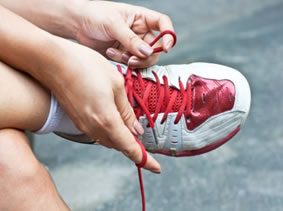 For children who are going back to school, make sure that they have comfortable shoes, especially if they are young and growing. When shopping for your child’s shoes, have the lengths and widths of their feet measured. Opt for shoes that have extra toe room for your children to grow into. Children’s shoes should also support the heel and should not be heavy, curved, and are light in weight. Also look for shoes that have good grip on the bottom soles so as to prevent slipping and falling.
For children who are going back to school, make sure that they have comfortable shoes, especially if they are young and growing. When shopping for your child’s shoes, have the lengths and widths of their feet measured. Opt for shoes that have extra toe room for your children to grow into. Children’s shoes should also support the heel and should not be heavy, curved, and are light in weight. Also look for shoes that have good grip on the bottom soles so as to prevent slipping and falling.
Finding a proper fitting shoe is important in reducing injuries and preventing foot problems. For more information about treatment, contact one of our podiatrists of New York Foot and Ankle. Our doctors will treat your foot and ankle needs.
Proper Shoe Fitting
A common concern when it comes to foot health, having properly fitted shoes can help prevent injuries to the foot. Out feet affect our posture and gait, which in turn affects the biomechanics and overall bodily structure. With 33 joints, 26 bones, and over 100 ligaments, the potential for serious injury is much greater than one realizes. Although the feet cease growth in adulthood, they still change shape as they mature. Here are some factors to consider when it comes to investing in proper fitting shoes:
- Be sure the shoes fit correctly right away
- Ensure the ball of your foot fits comfortably in the widest portion of the shoes
- Even though they may look fashionable, improper fitting shoes can either create adverse conditions or exacerbate existing ones you may already have
- Walk along a carpeted surface to ensure the shoes comfortably fit during normal activity
Keeping in mind how shoes fit the biomechanics of your body, proper fitting shoes is vitally important. Fortunately, it is not difficult to acquire footwear that fits correctly. Be sure to wear shoes that support the overall structure of your body. Do your feet a favor and invest in several pairs of well-fitted shoes today.
If you have any questions please feel free to contact our offices located in Bethpage and Franklin Square, NY. We offer the newest diagnostic tools and technology to treat your foot and ankle needs.
Johnathan Gray on Recovery from Torn Achilles Tendon
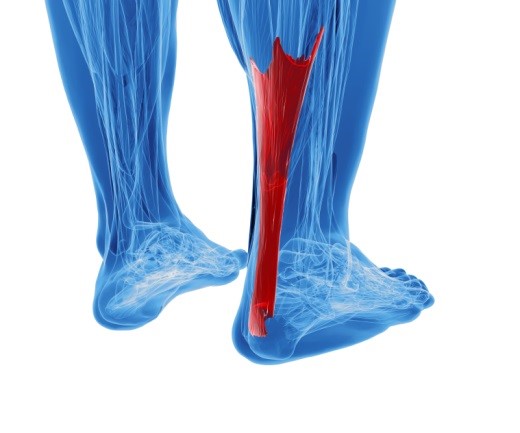 Texas Longhorns Johnathan Gray sustained a torn Achilles tendon while preparing for the 2016 NFL Draft. Gray had torn his Achilles tendon before in 2013, but had to have surgery and rehabilitation. The injury affected Gray’s play for some months during the 2014 season, but he was able to make a 40-yard touchdown run against West Virginia. Gray’s injury may mark the potential end of his shot into an NFL career.
Texas Longhorns Johnathan Gray sustained a torn Achilles tendon while preparing for the 2016 NFL Draft. Gray had torn his Achilles tendon before in 2013, but had to have surgery and rehabilitation. The injury affected Gray’s play for some months during the 2014 season, but he was able to make a 40-yard touchdown run against West Virginia. Gray’s injury may mark the potential end of his shot into an NFL career.
Achilles tendon injuries need immediate attention to avoid future complications. If you need your feet checked, contact one of our podiatrists of New York Foot and Ankle. Our doctors will treat your foot and ankle needs.
What is the Achilles Tendon?
The Achilles tendon is a tendon that connects the lower leg muscles and calf to the heel bone of the foot. It is the strongest tendon in the human body and is essential for making movement possible. Because this tendon is such an integral part of the body, any injuries to it can cause severe difficulties and should immediately be presented to a doctor.
What are the symptoms of an Achilles Tendon Injury?
There are various types of injuries that can affect the Achilles tendon. The two most common are Achilles tendinitis and ruptures of the tendon.
Achilles Tendinitis Symptoms
- Inflammation
- Dull to Severe Pain
- Increased blood flow to the tendon
- Thickening of the tendon
Rupture Symptoms
- Extreme pain and swelling in the foot
- Snapping sensation
- Total immobility
Treatment and Prevention
Achilles tendon injuries are diagnosed by a thorough physical evaluation, which can include an MRI. Treatment involves rest, physical therapy, and in some cases, surgery. However, various preventative measures can be taken to avoid these injuries, such as:
- Thorough stretching of the tendon before and after exercise
- Strengthening exercises like calf raises, squats, leg curls, leg extensions, leg raises, lunges, and leg presses
If unable to immediately see your podiatrist, remember to Rest, Ice, Compress, and Elevate until then.
If you have any questions please feel free to contact our offices located in Bethpage and Franklin Square, NY. We offer the newest diagnostic tools and technology to treat your foot and ankle needs.
Cebu City Marathon Runners run Barefoot
 Runners participating in a competition in the Cebu City Marathon (CCM) found themselves running the whole 42-kilometer route without any footwear, completely barefoot. One of the runners, Edwin Colina, says, “One of the reasons why we run barefoot is because we want something that is very challenging.” He says his reason for running barefoot is in celebration of Cebu’s patron saint, Sr. Santo Niño. The group of three barefoot runners was able to finish the marathon in 5 hours and 41 minutes.
Runners participating in a competition in the Cebu City Marathon (CCM) found themselves running the whole 42-kilometer route without any footwear, completely barefoot. One of the runners, Edwin Colina, says, “One of the reasons why we run barefoot is because we want something that is very challenging.” He says his reason for running barefoot is in celebration of Cebu’s patron saint, Sr. Santo Niño. The group of three barefoot runners was able to finish the marathon in 5 hours and 41 minutes.
Barefoot running has its own share of benefits and disadvantages. If you have any concerns about your feet or ankles, contact one of our podiatrists of New York Foot and Ankle. Our doctors will treat your foot and ankle needs.
Barefoot Running
The Impact of Barefoot Running
-Running without shoes changes the motion of your running, as most running is done by landing on the heel of the feet.
-Running barefoot requires a different way of running; the landing is done on the front part of the feet.
The Advantages of Barefoot Running
-When running and landing on the front feet, the impact on the feet and ankle is reduced, this can reduce stress injuries.
-It strengthens muscles in the feet and ankles and the lower legs.
-Balance of the body is improved and there is a greater sensory input from the feet to the rest of the body.
The Drawbacks of Barefoot Running
-No protection while running, makes it likely that runners will land on sharp objects and scrapes, bruises and cuts on the feet will result.
-Blisters may form.
-Possibility of plantar fascia problems.
-Risk of getting Achilles tendonitis.
So what can runners do to make barefoot running safe? It’s best to make a slow transition from running shoes to barefoot running. Once the feet begin to adjust, try walking, then jogging and gradually increasing the distance. Minimalist running shoes may also be an option.
If you have any questions please feel free to contact our offices located in Bethpage and Franklin Square, NY. We offer the newest diagnostic tools and technology to treat your foot and ankle needs.
Stem Cell Treatment Being Developed to Fight RA
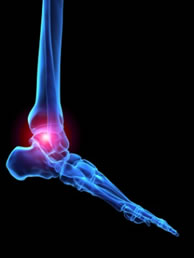 New research indicates that stem cell technology can help fight against autoimmune diseases like rheumatoid arthritis. Stem cell research has long been regarded as an area of debate, as stem cells could only be acquired through embryo cells. Recent medical advancements have allowed doctors and scientists to move forward into stem cell research, which offers many promises of medical treatment.
New research indicates that stem cell technology can help fight against autoimmune diseases like rheumatoid arthritis. Stem cell research has long been regarded as an area of debate, as stem cells could only be acquired through embryo cells. Recent medical advancements have allowed doctors and scientists to move forward into stem cell research, which offers many promises of medical treatment.
Because RA affects more than just your joints, including the joints in your feet and ankles, it is important to seek early diagnosis from your podiatrist if you feel like the pain in your feet might be caused by RA. For more information, consult with one of our podiatrists of New York Foot and Ankle. Our doctors will assist you with all of your foot and ankle needs.
What Is Rheumatoid Arthritis?
Rheumatoid Arthritis (RA) is an autoimmune disorder in which the body’s own immune system attacks the membranes surrounding the joints. Inflammation of the lining and eventually the destruction of the joint’s cartilage and bone occur, causing severe pain and immobility.
Rheumatoid Arthritis of the Feet
Although RA usually attacks multiple bones and joints throughout the entire body, almost 90 percent of cases result in pain in the foot or ankle area.
Symptoms
- Swelling & pain in the feet
- Stiffness in the feet
- Pain on the ball or sole of feet
- Joint shift and deformation
Diagnosis
Quick diagnosis of RA in the feet is important so that the podiatrist can treat the area effectively. Your doctor will ask you about your medical history, occupation, and lifestyle to determine the origin of the condition. Rheumatoid Factor tests help to determine if someone is affected by the disease.
If you have any questions please feel free to contact our offices located in Bethpage and Franklin Square, NY. We offer the newest diagnostic tools and technology to treat your foot and ankle needs.
Drew Brees Suffers from Fascia Tear
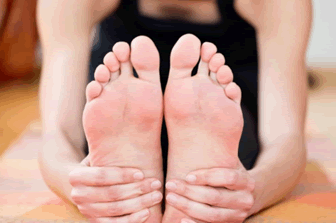 Quarterback, Drew Brees, for the New Orleans Saints has been suffering from a torn plantar fascia. While Brees has been hoping to participate in the final two games of the season, it does not appear the given circumstances are in his favor as the injury is having a negative effect on his planting foot. The veteran player was injured during a game against the Detroit Lions, where he had to have his foot taped. Brees has been seeing the same physician that is looking after Peyton Manning’s plantar fascia problems.
Quarterback, Drew Brees, for the New Orleans Saints has been suffering from a torn plantar fascia. While Brees has been hoping to participate in the final two games of the season, it does not appear the given circumstances are in his favor as the injury is having a negative effect on his planting foot. The veteran player was injured during a game against the Detroit Lions, where he had to have his foot taped. Brees has been seeing the same physician that is looking after Peyton Manning’s plantar fascia problems.
Plantar fasciitis can be very painful and inconvenient. If you are experiencing heel pain or symptoms of plantar fasciitis, visit one of our podiatrists of New York Foot and Ankle. Our doctors can treat your heel pain as well as any other foot or ankle condition.
What is Plantar Fasciitis?
Plantar fasciitis is the inflammation of the thick band of tissue that runs along the bottom of your foot, known as the plantar fascia, and causes mild to severe heel pain.
What Causes Plantar Fasciitis?
· Excessive running
· Non-supportive shoes
· Overpronation
· Repeated stretching and tearing of the plantar fascia
How Can It Be Treated?
· Conservative measures – anti-inflammatories, ice packs, stretching exercises, physical therapy, orthotic devices
· Shockwave therapy – sound waves are sent to the affected area to facilitate healing and are usually used for chronic cases of plantar fasciitis
· Surgery – usually only used as a last resort when all else fails. The plantar fascia can be surgically detached from the heel
While very treatable, plantar fasciitis is definitely not something that should be ignored. Especially in severe cases, speaking to your doctor right away is highly recommended to avoid complications and severe heel pain. Your podiatrist can work with you to provide the appropriate treatment options tailored to your condition.
If you have any questions, please contact our offices in Franklin Square and Bethpage, NY. We offer the newest diagnostic and treatment technologies for all your foot and ankle injuries.
Bunions vs. Other Foot Conditions
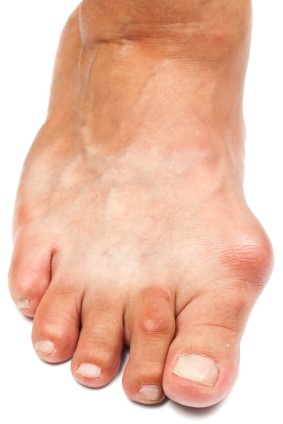 Bunions are one of the most common foot conditions for the big toe joint; however, there are other ailments that are often mistaken for a bunion. Arthritis in the big toe joint, also known as hallux rigidus, occurs due to deteriorating cartilage. While the spurs that occur mimic bunions, treatment and pain can be different. Ganglion cysts, firm fluid sacs, can occur anywhere, but when on the foot they are often confused for bunions.
Bunions are one of the most common foot conditions for the big toe joint; however, there are other ailments that are often mistaken for a bunion. Arthritis in the big toe joint, also known as hallux rigidus, occurs due to deteriorating cartilage. While the spurs that occur mimic bunions, treatment and pain can be different. Ganglion cysts, firm fluid sacs, can occur anywhere, but when on the foot they are often confused for bunions.
Bunion surgery usually occurs after non-surgical methods have proved to be ineffective. If you have any concerns, consult with one of our podiatrists of New York Foot and Ankle. Our doctors will assist you with all of your foot and ankle needs.
What is a Bunion?
A bunion is formed of swollen tissue or an enlargement of boney growth, usually located at the base joint of the toe that connects to the foot. The swelling occurs by the bones in the big toe shifting inward, which impacts the other toes of the foot. This causes the area around the base of the big toe to become inflamed and painful.
Why do Bunions Form?
- Genetics – susceptibility to bunions are often hereditary
- Stress on the feet – poorly fitted and uncomfortable footwear that places stress on feet, such as heels, can cause bunions to form
How are Bunions Diagnosed?
Doctors often perform two tests – blood tests and x-rays – when trying to diagnose bunions, especially in the early stages of development. Blood tests help determine if the foot pain is being caused by something else, such as arthritis, while x-rays provide a clear picture of your bone structure to your doctor.
How are Bunions Treated?
- Refrain from wearing heels or similar shoes that cause discomfort
- Select wider shoes that can provide more comfort and reduce pain
- Anti-inflammatory and pain management drugs
- Orthotics or foot inserts
- Surgery
If you have any questions please feel free to contact our offices located in Bethpage and Franklin Square, NY. We offer the newest diagnostic tools and technology to treat your foot and ankle needs.
Causes of Hammertoe
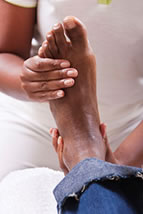 There are many different causes of hammertoe, all of which result in inflammation of the bent toe joint and pain, especially when wearing shoes. Hammertoes can either be inherited, result from an injury, arthritis, muscle imbalance, or ill-fitting shoes. If not treated right away, hammertoes can develop into a permanent condition that can keep degenerating over time. Surgery becomes the only option in severe cases like these. Treatments for hammertoe involve foot padding, prescription orthotics, or surgery.
There are many different causes of hammertoe, all of which result in inflammation of the bent toe joint and pain, especially when wearing shoes. Hammertoes can either be inherited, result from an injury, arthritis, muscle imbalance, or ill-fitting shoes. If not treated right away, hammertoes can develop into a permanent condition that can keep degenerating over time. Surgery becomes the only option in severe cases like these. Treatments for hammertoe involve foot padding, prescription orthotics, or surgery.
Hammertoes can be a painful condition to live with. If you have any concerns, consult with one of our podiatrists of New York Foot and Ankle. Our doctors will assist you with all of your foot and ankle needs.
Hammertoe
Hammertoe is a foot deformity that affects the joints of the second, third, fourth, or fifth toes of your feet. It is a painful foot condition in which these toes curl and arch up, which can often lead to pain when wearing footwear.
Symptoms
- Pain in the affected toes
- Development of corns or calluses due to friction
- Inflammation
- Redness
- Contracture of the toes
Causes
- Genetics – people who are genetically predisposed to hammertoe are often more susceptible
- Arthritis – because arthritis affects the joints in your toes, further deformities stemming from arthritis can occur
- Trauma – direct trauma to the toes could potentially lead to hammertoe
- Ill-fitting shoes – undue pressure on the front of the toes from ill-fitting shoes can potentially lead to the development of hammertoe
Treatment
- Orthotics – custom made inserts can be used to help relieve pressure placed on the toes and therefore relieve some of the pain associated with it
- Medications – oral medications such as anti-inflammatories or NSAIDs could be used to treat the pain and inflammation hammertoes causes. Injections of corticosteroids are also sometimes used
- Surgery – in more severe cases where the hammertoes have become more rigid, foot surgery is a potential option
If you have any questions please feel free to contact our offices located in Bethpage and Franklin Square, NY. We offer the newest diagnostic tools and technology to treat your foot and ankle needs.
Rutgers Men’s Basketball Team Loses Ibrahima Diallo
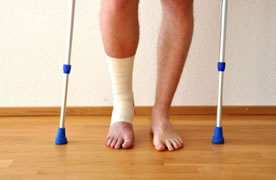 The Rutgers basketball men’s team has lost its freshman forward/center player, Ibrahima Diallo, after he suffered a fractured foot during practice. This news means that Rutgers will have only two men for the game against Monmouth, and maybe even for the upcoming Big Ten schedule. The team’s best player, junior forward Deshawn Freeman, is on recovery since December 1 for a knee injury. Another player, sophomore center Shaq Doorson, is also out with a broken foot. Diallo’s injury now puts the Rutgers basketball men’s team in a challenging situation.
The Rutgers basketball men’s team has lost its freshman forward/center player, Ibrahima Diallo, after he suffered a fractured foot during practice. This news means that Rutgers will have only two men for the game against Monmouth, and maybe even for the upcoming Big Ten schedule. The team’s best player, junior forward Deshawn Freeman, is on recovery since December 1 for a knee injury. Another player, sophomore center Shaq Doorson, is also out with a broken foot. Diallo’s injury now puts the Rutgers basketball men’s team in a challenging situation.
A broken foot requires immediate medical attention and treatment. If you have any concerns, consult with one of our podiatrists of New York Foot and Ankle. Our doctors will assist you with all of your foot and ankle needs.
Broken Foot Causes, Symptoms, and Treatment
A broken foot is caused by one of the bones in the foot typically breaking when bended, crushed, or stretched beyond its natural capabilities. Usually the location of the fracture indicates how the break occurred, whether it was through an object, fall, or any other type of injury.
Common Symptoms of Broken Feet:
- Bruising
- Pain
- Redness
- Swelling
- Blue (foot)
- Numbness
- Cold
- Misshapen
- Cuts
- Deformities
Those that suspect they have a broken foot shoot seek urgent medical attention where a medical professional could diagnose the severity.
Treatment for broken bones varies depending on the cause, severity and location. Some will require the use of splints, casts or crutches while others could even involve surgery to repair the broken bones. Personal care includes the use of ice and keeping the foot stabilized and elevated.
If you have any questions please feel free to contact our offices located in Bethpage and Franklin Square, NY. We offer the newest diagnostic tools and technology to treat your foot and ankle needs.
More...
Professional Racing Driver Kyle Busch Undergoes Leg and Foot Surgery
 Kyle Busch, professional stock car racing driver and the 2015 Spring Cup Champion, suffered a broken leg and foot after a crash after practice at Daytona International Speedway. Following the break, Busch had to have surgery performed. He is expected to be in recovery for up to as much as 10 weeks. The accident gave Busch limited mobility in his knee. Doctors had removed the rod from Busch’s leg and foot, but he is expected to be ready for practice at Daytona on February 12.
Kyle Busch, professional stock car racing driver and the 2015 Spring Cup Champion, suffered a broken leg and foot after a crash after practice at Daytona International Speedway. Following the break, Busch had to have surgery performed. He is expected to be in recovery for up to as much as 10 weeks. The accident gave Busch limited mobility in his knee. Doctors had removed the rod from Busch’s leg and foot, but he is expected to be ready for practice at Daytona on February 12.
Foot surgery is sometimes necessary to fix a foot ailment. If you have any concerns about your feet contact one of our podiatrists of New York Foot and Ankle. Our doctors will treat your foot and ankle needs.
When Is Surgery Necessary?
Foot and ankle surgery is generally reserved for cases in which less invasive, conservative procedures have failed to help with the problem. Some of the cases in which surgery may be necessary are:
- Removing foot deformities like bone spurs and bunions
- Severe arthritis that has caused bone issues
- Cosmetic reconstruction
What Types of Surgery Are There?
The type of surgery you receive will depend on the nature of the problem you have. Some of the possible surgeries include:
- Bunionectomy for painful bunions
- Surgical fusion for realignment of bones
- Neuropathy decompression surgery to treat nerve damage
Benefits of Surgery
Although surgery is usually a last resort, it can provide more complete pain relief compared to non-surgical methods and may allow you to finally resume full activity.
Surgical techniques have also become increasingly sophisticated. Techniques like endoscopic surgery allow for smaller incisions and faster recovery times.
If you have any questions please feel free to contact our offices located in Bethpage and Franklin Square, NY. We offer the newest diagnostic tools and technology to treat your foot and ankle needs.
Yellowing Toenails as a Symptom of Fungal Infection
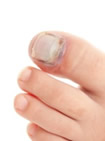 If your toenails are yellow, you may have a fungal infection called onychomycosis. This disease mostly affects the toenails but can also affect the fingernails as well. According to Aaron Sinclair, M.D., there are many causes of onychomycosis, and they include age, exposure to unclean wet and public areas, poor foot hygiene, poor circulation, and systemic infections or diseases like diabetes. If not treated, the yellowed toenail can detract and break away on its own. Treatments include topical medication, and preventive measures should be taken to further prevent onychomycosis from coming back.
If your toenails are yellow, you may have a fungal infection called onychomycosis. This disease mostly affects the toenails but can also affect the fingernails as well. According to Aaron Sinclair, M.D., there are many causes of onychomycosis, and they include age, exposure to unclean wet and public areas, poor foot hygiene, poor circulation, and systemic infections or diseases like diabetes. If not treated, the yellowed toenail can detract and break away on its own. Treatments include topical medication, and preventive measures should be taken to further prevent onychomycosis from coming back.
While toenail fungus is troublesome to eradicate, doing so is not impossible. To learn more, consult with one of our podiatrists of New York Foot and Ankle. Our doctors will provide you with quality foot and ankle information and treatment.
Toenail Fungus Treatment
Toenail fungus is a problem which affects many people and is hard to get rid of. Fortunately, there are several methods to go about treating toenail fungus.
Antibiotics & Treatments
Lamisil – is the most commonly effective treatment for toenail fungus. It is available as an antibiotic Terbinafine tablet and cream. Terbinafine is a chemical component which kills fungal growth on the body. Applying regular doses will gradually kill the fungal growth. It is important to keep the area clean and air free.
Talcum powder – applying powder on the feet and shoes helps keep the feet free of moisture and sweat.
Sandals or open toed shoes – wearing these will allow air movement and help keep feet dry. They also expose your feet to light, which fungus cannot tolerate. Socks with moisture wicking material also help as well
Alternative Treatments
There are always surgical procedures that are available for toenail fungus. Some people would like immediate quick removal of toenail fungus. Surgeons will be able to cut through and remove the growth using laser surgery. It is important not to try and remove it yourself. Once removed, your old shoes will need to be replaced to avoid reinfection.
If you have any questions please feel free to contact our offices located in Bethpage and Franklin Square, NY. We offer the newest diagnostic and treatment technologies for all your foot and ankle needs.
Peyton Manning Instructed to Take Break by Foot Specialist
 Peyton Manning has been told by foot specialist Dr. Robert Anderson of Charlotte, North Carolina to take a break for two weeks. For the past few months, Manning has been feeling a slight soreness in his left heel and apparently suffered a tear playing against the colts. Since then, the suffering has only continued and Manning has been put in a foot cast so he can get some rest and so his foot can get some healing.
Peyton Manning has been told by foot specialist Dr. Robert Anderson of Charlotte, North Carolina to take a break for two weeks. For the past few months, Manning has been feeling a slight soreness in his left heel and apparently suffered a tear playing against the colts. Since then, the suffering has only continued and Manning has been put in a foot cast so he can get some rest and so his foot can get some healing.
Playing with a sports injury can cause many problems with later on. To learn more, consult with one of our podiatrists of New York Foot and Ankle. Our doctors will provide you with quality foot and ankle information and treatment.
Playing Sports with Foot Injuries
Many types of foot injuries affect athletes over the course of their athletic career. Despite their setbacks, many of these athletes will continue to play with mild foot injuries and attempt to ‘push’ through the pain. In order to be able to prevent injuries, it is important to stretch before any activity, wear proper footwear and replace shoes as needed. Some of the foot injuries athletes are at risk for include:
- Turf toe- upward bending of the big toe outside normal range of motion
- Stress Fractures
- Overpronation- excessive foot movement during gait
- Plantar Fasciitis- swollen ligament in the foot’s base
- Strains
For more serious injuries it is recommended to consult with a podiatrist or orthopedic specialist as fractures and other serious conditions may require surgery.
If you have any questions please feel free to contact our offices located in Bethpage and Franklin Square, NY. We offer the newest diagnostic and treatment technologies for all your foot and ankle needs.
Tips in Preventing the Many Different Types of Warts
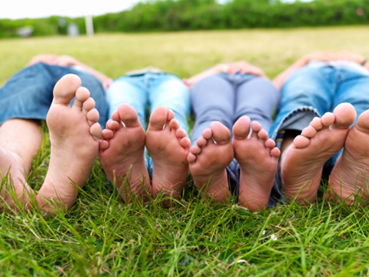 There are many different varieties of warts, and none of them are pleasant. Plantar warts appear on the bottoms of your feet and are considered contagious. Treatment for your warts involve soaking them in warm water, sanding it, and applying an over-the-counter treatment that has salicylic acid. Cover your wart to prevent further spreading of the infection and repeat the process until the warts are gone.
There are many different varieties of warts, and none of them are pleasant. Plantar warts appear on the bottoms of your feet and are considered contagious. Treatment for your warts involve soaking them in warm water, sanding it, and applying an over-the-counter treatment that has salicylic acid. Cover your wart to prevent further spreading of the infection and repeat the process until the warts are gone.
Plantar warts can be very uncomfortable. If you have any concerns with plantar warts on your feet contact one of our podiatrists of New York Foot and Ankle. Our doctors will treat your foot and ankle needs.
About Plantar Warts
Plantar warts are the result of HPV, or human papillomavirus, getting into open wounds on the feet. They are mostly found on the heels or balls of the feet.
While plantar warts are generally harmless, those experiencing excessive pain or those suffering from diabetes or a compromised immune system require immediate medical care. Plantar warts are easily diagnosed, usually through scraping off a bit of rough skin or by getting a biopsy.
Symptoms
- Legions on the bottom of your feet, usually rough and grainy
- Hard or thick callused spots
- Wart seeds, which are small clotted blood vessels that look like little black spots
- Pain, discomfort, or tenderness of your feet when walking or standing
Treatment
- Freezing
- Electric tool removal
- Laser Treatment
- Topical Creams (prescription only)
- Over-the-counter medications
To help prevent developing plantar warts, avoid walking barefoot over abrasive surfaces that can cause cuts or wounds for HPV to get into. Avoiding direct contact with other warts, as well as not picking or rubbing existing warts, will help prevent the further spread of plantar warts. However, if you think you have developed plantar warts, speak to your podiatrist. He or she can diagnose the warts on your feet and recommend the appropriate treatment options.
If you have any questions please feel free to contact our offices located in Bethpage and Franklin Square, NY. We offer the newest diagnostic tools and technology to treat your foot and ankle needs.
Read more about plantar warts.
